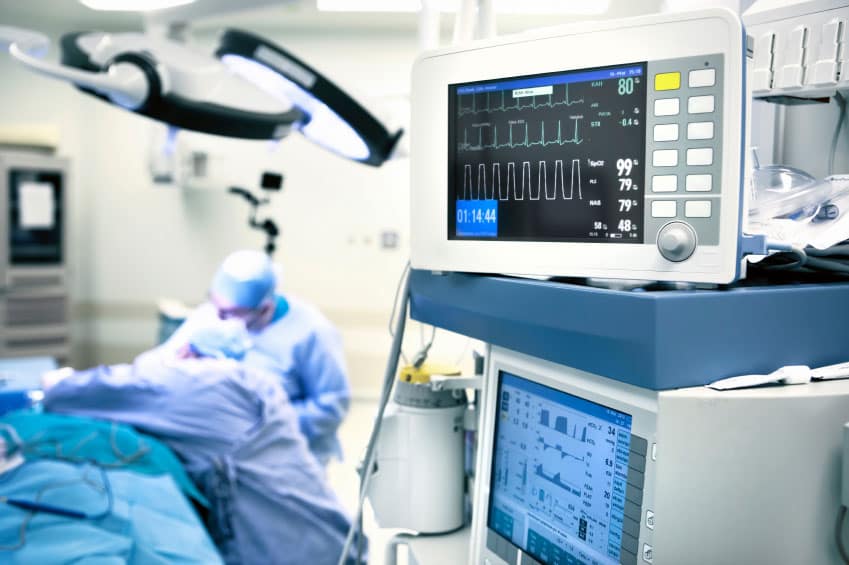In order to assist all parties involved in operations with medical devices to maintain compliance with applicable requirements under the new framework established by the recent UK Medicines and Medical Devices Bill, special Explanatory Notes have been published. In particular, the document accompanies the Bill that was introduced earlier on February 13, 2020, and provides the industry representatives with more details regarding the way the new rules would be implemented and the consequences they will have.

Overview of the Regulatory Framework
According to the explanatory notice, the new Bill is intended to:
- Implement a new approach to the distribution of power in the sphere of medical device regulation,
- Combine all provisions regarding enforcement and liability in one document,
- Establish a system that improves access to information about medical devices.
Prior to Brexit, medical device regulation was in the sphere of EU competence. Thus, EU regulations covered all issues related to medical devices and procedures associated with placing them on the market. All legislation in this area has been developed and adopted in accordance with the appropriate European procedures and then implemented to the UK national legislation through the adoption of the appropriate acts. In particular, medical devices were regulated under the UK Medical Devices Regulations 2002 which was subject to periodic updates to implement changes to the general European legislation. The document sets forth the definition of a medical device and the detailed obligations of the manufacturers. According to the notes, after the expiration of the transition period, new changes to the EU legislation would no longer be implemented to the appropriate UK legislation. Another important point is that current UK national legislation covers mostly the matters related to the safety of the devices allowed to be placed on the domestic market and to amend them the basic regulation should be implemented first. To deal with this issue, the new Bill creates legislative mechanisms necessary to amend existing regulation.
One of the most important changes to the EU legislation related to medical devices was the implementation of the new Medical Devices Regulation 2017/745 (MDR) and In Vitro Medical Devices Regulation 2017/746 (IVDR) aimed at the improvement of the regulatory framework. Upon the expiration of the transitional period, both regulations would be fully applicable in all member states, but the way they would be applicable in the UK differs substantially:
- The MDR will be applicable in the EU, as well as in the UK from May 26, 2020; and
- The IVDR will be applicable in the EU from May 26, 2022, while it would not be applicable in the UK.
Thus, the UK would have to develop its own approach to the in vitro diagnostic devices regulation using the mechanisms established by the new Bill.
When describing the device-specific legislation it is important to mention the following: in most cases the device should bear a CE mark in order to be allowed to be placed on the EU market. Prior to placing such a mark, the manufacturer shall confirm that the device has successfully passed the assessment and complies with any and all requirements related to safety and performance for the intended purpose. In the UK, general oversight and post-market surveillance are performed by the Medicines and Healthcare products Regulating Agency (MHRA) which is the authority responsible for ensuring the safety and effectiveness of the devices allowed to be marketed in the UK.

Novelties of the UK’s Medical Device Legislation
First of all, it is planned that the new act would contain all provisions related to the enforcement regime with regard to the medical devices. The document would also include the provisions regulating sanctions applicable in case of violations conducted by the entities operating medical devices. At the moment, the provisions regulating the aforementioned aspects are spread among numerous acts and create legal uncertainty and complexity of implementation.
To improve the existing situation with the enforcement and regulatory framework, the new Bill implements several important aspects:
- All provisions related to enforcement notices issued in the case of noncompliance with applicable regulations will be consolidated into the singular act,
- The criminal offense and its features would be further clarified,
- As an alternative to the criminal prosecution, new civil sanctions would be introduced (in the form of a monetary penalty),
- The Secretary of State would be entitled to share information about medical devices upon certain circumstances directly indicated in the act (e.g. to make information on medical devices public in case if it is reasonably necessary for safety reasons to protect the public health).
The document also describes the specifics of the implementation of the Bill depending on the particular territory. According to the general rules, the Bill would be applicable within the whole territory of the UK. At the same time, in certain parts the application of the bill would be limited – in particular, it would be based on the additional acts the Bill amends. Thus, such an amendment would be applicable only within the territories where the appropriate initial regulations should be applied. For example, in a case, if the new amendments in some parts are related to the sphere subject to the regulation by the Scottish Parliament, The National Assembly for Wales on the Northern Ireland Assembly should be adopted by the aforementioned legislative bodies first before being applicable within the appropriate territories.
New Medical Devices Regulation in Detail
The main part of the explanatory notes is dedicated to the description of the particular provisions of the new Medicines and Medical Devices Bill and the way they should be implemented. Regarding the medical devices’ regulation, the explanatory notes provide the following:
- Regulatory aspects. Describing the delegated powers the Bill refers to the “Secretary of State”, while actually the appropriate functions would be performed by the Secretary of State for Health and Social Care. As it was stated in the Bill, all actions taken by the Secretary of State should be made taking into account the safety matters, the availability of medical devices on the domestic market for patients and healthcare institutions, and also the attractiveness of the UK for medical device manufacturers and suppliers. According to the Bill, the Secretary of State should be also responsible for the development of provisions establishing the requirements medical device should meet in order to be allowed to be placed on the market. For the compliance with applicable requirements to be confirmed, the device should pass a conformity assessment procedure performed by the eligible assessment body.
- Enforcement. The Bill consolidates all the provisions governing the enforcement procedures in the sphere of medical devices. In particular, the Bill defines the “Enforcement authority”, provides the exhaustive list of enforcement notices and describes in detail each type of the notices and the information it should contain.
To assist manufacturers, importers, suppliers and other industry representatives in assessing the impact of upcoming regulatory changes, the present explanatory notes provide an in-depth and rigorous description of all provisions of the new Medicines and Medical Devices Bill and of all the important aspects associated thereto.

How Can RegDesk Help?
RegDesk is a next-generation web-based software for medical device and IVD companies. Our cutting-edge platform uses machine learning to provide regulatory intelligence, application preparation, submission and approvals management globally. Our clients also have access to our network of over 4000 compliance experts worldwide to obtain verification on critical questions. Applications that normally take 6 months to prepare can now be prepared within 6 days using RegDesk Dash(TM). Global expansion has never been this simple.
Sources:
https://publications.parliament.uk/pa/bills/cbill/58-01/0090/en/20090en.pdf

